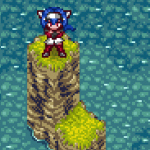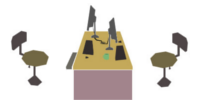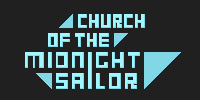Interview: CrossCode’s Felix Klein
As a title packed with content that combines modern game elements with SNES Zelda-era joy, Radical Fish Games’ CrossCode already has a strong following, which is impressive, given the ambition of the project. Players take the role of Lea, a mute gamer playing a fictional MMO, presenting a game within the game that includes awesome mechanics and the mastery of elemental forces. I chatted with developer Felix Klein on the goals of the project as the studio nears full release.
Erik Meyer: CrossCode unites pixel JRPGs with a modern open world feel, giving players a huge number of options in advancement, exploration, and story. I imagine this made for a long ‘to do’ list, and as different game elements effect one-another, there’s a lot to keep track of. That said, how do you keep the big picture in focus while working on the smaller parts of the game, and conversely, when making larger decisions, how do you keep track of the specifics that will be effected?
Felix Klein: The game is pretty huge in scope, which is something you normally should avoid as a small indie developer… we did it anyway. We started by implemented most of the basic elements first, like the ball throwing, combat, UI, etc. We also took our time to polish these elements before starting to create content. We just wanted to make sure that the basics work well and feel “right”. From then on, we planned a rough story line, locations, skills… and started implementing the actual content. Overall, our development process is very “chronological”: we implement the content in the same order you’ll experience it in the game. That is especially helpful for Early Access, since we can release updates that feel connected, but it also helps to better judge that the game is going in a good direction. Still, it’s important to keep the big picture in mind, which is why we planned the full story first… but only roughly. When it comes to details in the story and the gameplay, a lot of decisions are made short term, because we believe that way we can best judge if things will fit in. For example: it’s much more effective to plan the final boss battle after you have the experience of implementing the previous boss battles. So far, we’ve been lucky enough that we didn’t have to make any major changes to the original plan. We also didn’t have to cut a lot of the content we originally planned. But that’s also why the development has been going on for a longer time now!
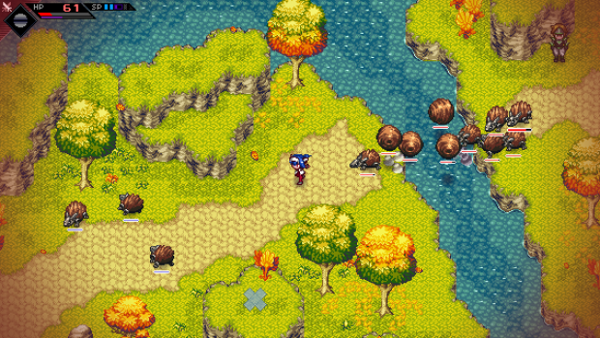
EM: Many of the gameplay components are not necessarily new to the genre but are extremely well implemented, such as the circuit board for character improvement or the fact that vendors show you what hey have to offer when you walk up to them (but before you click on them). How much do you feel you’ve had to reinvent the wheel, and when it comes to UI/UX within the game, can you speak to small things that improve the overall feel of play?
FK: Our team slogan is “The devil is in the details”, and that’s definitely true when it comes to implementing UI interfaces. We made sure to build a system early on that simplifies the integration of animations and smooth transitions for UIs and overall this has a big impact on how the interfaces feel. Otherwise, we always make sure interfaces are both usable with mouse/keyboard and gamepad and consider general design lessons (like “if it’s a button, make it look like a button”). The preview bubbles of the vendors actually have been implemented in previous projects, and we realized how useful they actually were already back then. A lot of these small quality-of-life things come from experience and constantly trying things out.
EM: You interact with your fan base more than most, asking them to weigh in on game assets and other design elements. Similarly, you have a great deal of information available on your site and involve the community in your process. Can you speak to these social media and online interactions, in terms of what challenges they present but also what positive responses have come out of them? How do you see gamers becoming invested in your project, and what have you found are the big takeaways in getting to this point?
FK: Overall, our interaction with the community has been a very positive experience for us. It’s a great source of feedback since you have a large number of different players. So when you have a large number of those players complain about a certain part of the game, you can be absolutely sure something must be wrong. We often also consider suggestions for new features by our players; that’s, for example, how the “Trader Book” and “Botanics Menu” have been created. But it’s also important to consider which suggestion is doable and realistic, because otherwise we’d probably now be working on a CrossCode MMO with selectable character classes and all… which would be pretty much doomed to fail.
Our general approach to how we interact with out community is that we want to keep things as transparent as possible while at the same time trying to not spoil too much. In the beginning of Early Access, it was very easy to show progress almost every day as we implemented new basic features. Since we’re now working on the conclusion of the story, it’s much harder to actually show progress without spoiling anything. We also have our weekly gamedev streams (which are just sometimes weekly these days for the same reason) and are always accessible via our Discord server. Another thing we learned is that it’s a good thing to be very upfront about difficult topics, like delays, for instance. We’ve had to postpone the release several time already, but we always announced this several month before we actually reached the promised date of release, explaining reasons for the delay and at the same time showing the progress that we’ve made. So far, the feedback by our community has always been very positive, and they’ve encouraged us to take the time to make sure the final game will actually be good. We’re very happy that our community is so patient with us!
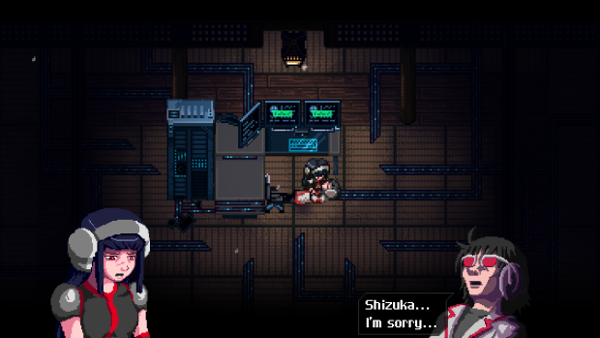
EM: When it comes to crafting items and a world filled with things for characters to pick up, what is your philosophy behind objects feeling interesting and unique versus forgettable and plentiful? As the different things characters have fill up a large inventory, how do you maintain individual meaning while creating lots of options and ‘stuff’?
FK: With a game like CrossCode, which comes comes with a very large quantity of items, it’s very difficult to make things stick out and stay individual. Since our equipment changes basic stats but also adds modifiers for special effects (things like HP regeneration, increased melee damage etc.), there are lots of options to make equipment more individual and special. In general, we avoid fully linear equipment upgrades that way – people actually can choose which equipments fits best for their play style by selecting the right modifiers. Also: another thing that might make our items/equipment more special is a number of puns and references hidden in their names and descriptions, I guess!
EM: With its focus on four elements, the game reminds me of Crystalis with the best parts of The Legend of Zelda: A Link to the Past and Chrono Trigger thrown in, and players experience a great deal of story depth and challenge in the journey through dungeons. As you’ve entered a genre that spans decades and has scores of iconic titles, what do you see as the parts of CrossCode that will inform future titles, be it via implementation, features, or other gameplay elements?
FK: In terms of features/gameplay elements, I believe that CrossCode sticks out a bit as it tries to combine a deep action-RPG experience (with lots of leveling and equipment, etc.) with the puzzle-focused gameplay of a Zelda game. That’s not a combination you find very often, and maybe more games will try to do this in the future? The control scheme of CrossCode is also fairly unique (and it works pretty well with both mouse/keyboard and a gamepad), which might inspire other games in the future. Finally, in terms of implementation/technology: the whole game is based on HTML5, which is something not very common for games of this scale. We actually do hope that this technology keeps evolving and that more people will pick it up in the future, as it is really a pleasure to work with.
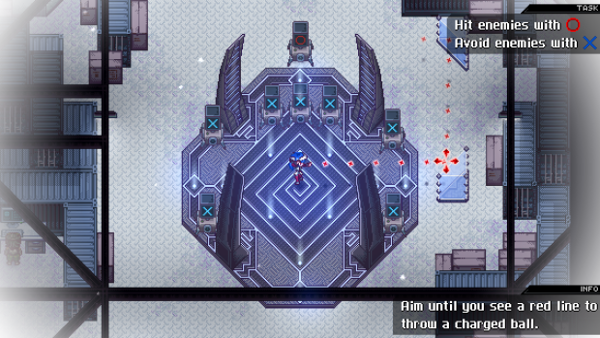
EM: To fund the game, you had a successful Indiegogo campaign, so I’m curious about that. Why Indiegogo, and within the game crowdfunding effort, what kinds of hurdles did you have in mobilizing and reaching your goal?
FK: Funding the game on Indiegogo was very difficult. It took us an extended campaign time of 2 month and a lot of marketing effort. We originally planned to do the crowdfunding on Kickstarter, but unfortunately the platform wasn’t available in Germany back then (it only arrived a few months later). We also made a lot of mistakes, like being too late in contacting the press. At least we had already released a playable demo version of the game at the time of the campaign – it probably didn’t have that much of a marketing effect, but it made plenty of backers more confident that we didn’t just deliver empty promises. In the end, we reached our goal close to the end of the campaign but had a very powerful boost so that we even managed to reach the first stretch goal (New Game+) pretty much at the last minute. This was partly due to a “Last Minute Hero” action, where every backer could add a small additional contribution to be part of the “Last Minute Hero” guild that will show up in CrossCode!
EM: Radical Fish Games has a variety of contributors, so describe the team dynamic. What methods and standards have helped you make solid progress, and what has helped you gel as a group?
FK: Our team is distributed around Germany and its surroundings, and we all work together over the Internet. We started communicating via Skype but quickly switched to Discord as it turned out to be a much more reliable option. Our team consists of a core of 2 people working full time and many contractors helping out and working on individual parts of the game, such as graphics, sound effects, and music. We have a fairly “flat hierarchy” in the team, and every team member is free to share ideas for the game; most content is also discussed within the team before it’s implemented. We also meet up two times per year for our “CrossWeek”, where we rent a place somewhere in Germany to work together on the game for about a week. Additionally, we visit cons and other events together when we can afford it!
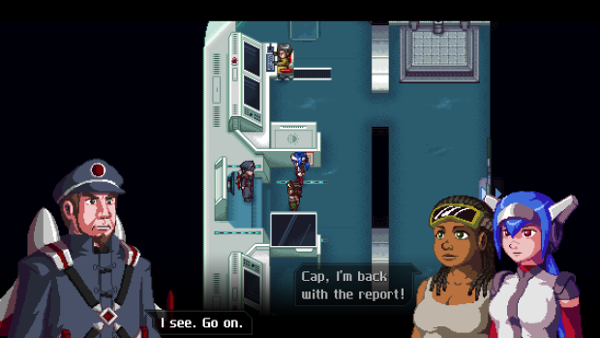
EM: As you come close to version 1.0 of the game on Steam (and you have a web demo, to boot), what does your pipeline look like, what does your ‘to do’ list look like, and what do you see on the horizon?
FK: The TO DO list now mostly includes content we have to create to finally conclude the story. This includes working on a few more locations and enemies, but mostly it will be cut-scenes, writing dialogs, and a lot of details we have to figure out. We also still have to implement level 3 combat arts and more optional side quests. And then there’s the content that is part of our backer perks from the Indiegogo campaign. This content might be added as post game content past the 1.0 release, but we’ll most definitely deliver it!
Here’s the element gameplay trailer, in case you missed it:

